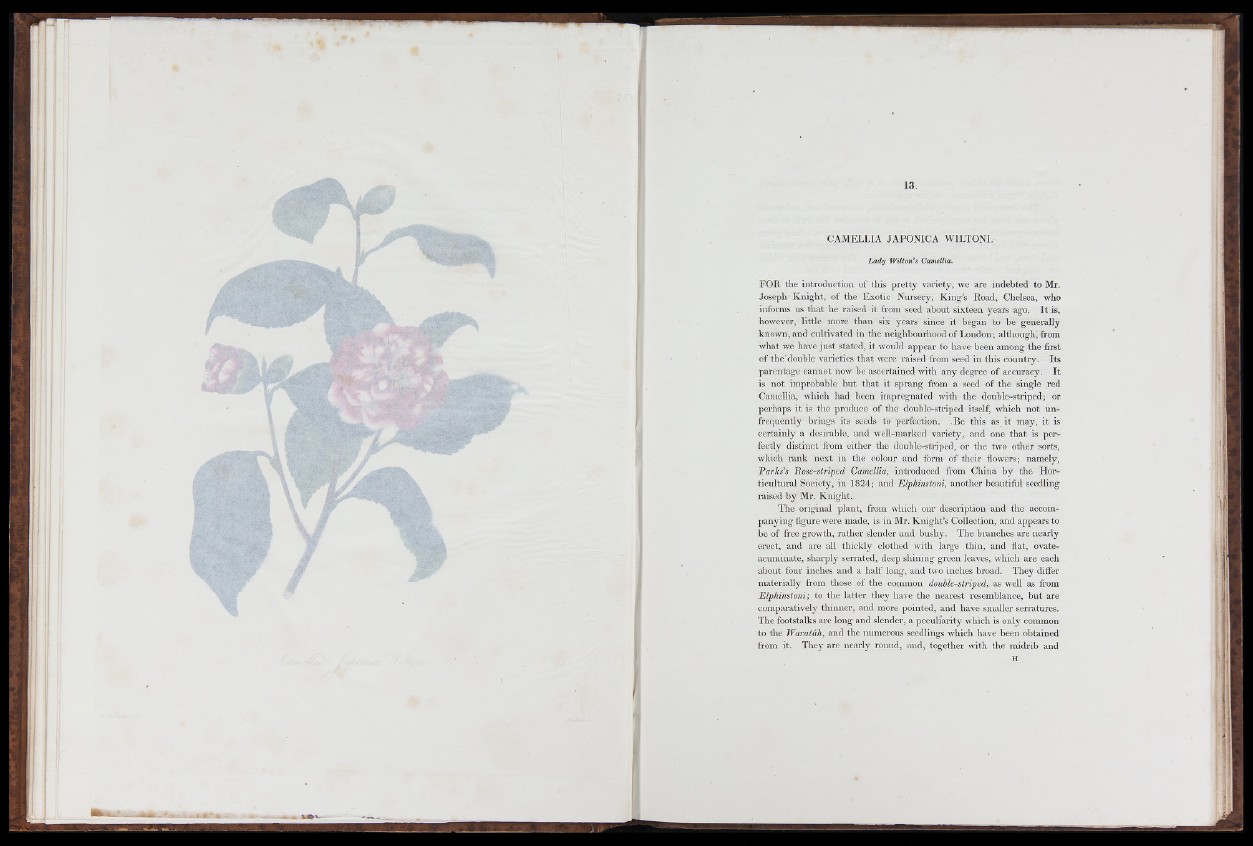
CAMELLIA JAPONICA WILTONI.
L a d y W ilto n 's Camellia.
FOR the introduction of this pretty variety, we are indebted to Mr.
Joseph Knight, of the Exotic Nursery, King’s Road, Chelsea, who
informs us th a t he raised it from seed about sixteen years ago. I t is,
however, little more than six years since it began to be generally
known, and cultivated in tlie neighbourhood of London; although, from
what we have ju s t stated, it would appear to have been among the first
of the double varieties th a t were raised from seed in this country. Its
parentage cannot now be ascertained with any degree of accuracy. I t
is not improbable b u t th a t it sprang from a seed of the single red
Camellia, which had been impregnated with the double-striped; or
perhaps it is the produce of the double-striped itself, which not un-
frequently brings its seeds to perfection. .Be this as it may, it is
certainly a desirable, and well-marked variety, and one th a t is perfectly
distinct from either the double-striped, or the two other sorts,
which rank next in the colour and form of their flowers; namely,
Parks's Rose-striped Camellia, introduced fi-om China b y the Horticultural
Society, in 1824; and Elphinstoni, another beautiful seedling
raised b y Mr. Knight.
The original plant, from which our description and the accompanying
figure were made, is in Mr. Knight’s Collection, and appears to
be of free growth, rather slender and bushy. The branches are nearly
erect, and are all thickly clothed with large thin, and flat, ovate-
acuminate, sharply serrated, deep shining green leaves, which are each
about four inclies and a h alf long, and two inches broad. They differ
materially from those of the common double-striped, as well as from
Elphinstoni; to the latter they have the nearest resemblance, b u t are
comparatively thinner, and more pointed, and have smaller serratures.
The footstalks are long and slender, a peculiarity which is only common
to the Waratáh, and the numerous seedlings which have been obtained
from it. They are nearly round, and, together with the midrib and